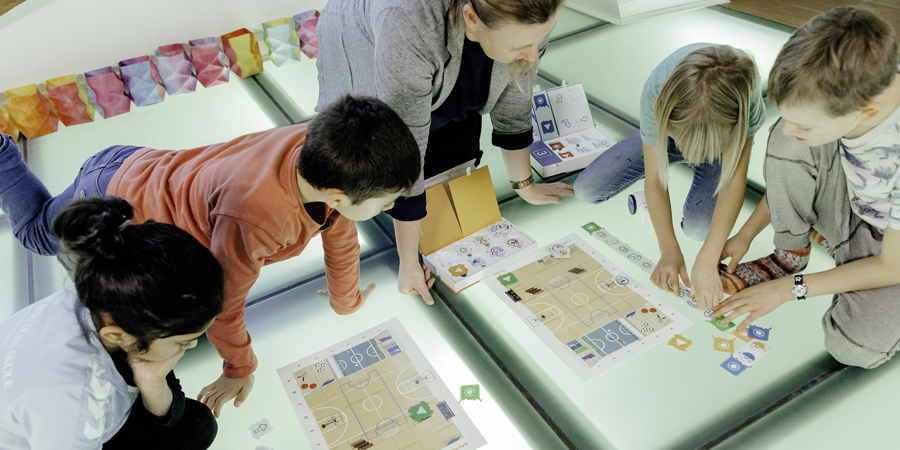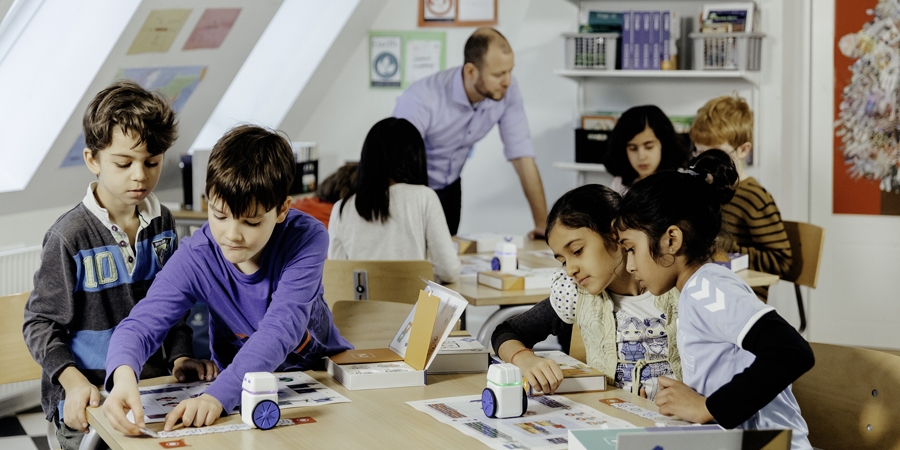With universal agreement that coding is part of the future of our digital literacy, helping pupils to learn programming skills should happen at the same time that they learn to read and write. However, it is understandable that time-poor teachers may be hesitant to add in an additional and complex subject matter. Fortunately, introducing coding to you class can be as easy as playing a game, and doesn’t require highly complex computing skills in order to teach it. For many in the sector it may appear to be counter-intuitive to take digital resources and screens out of the equation when you’re teaching coding. However, by doing this, you will be taking the coding offline and bolstering pupils’ education with simple and achievable tasks. It provides pupils with the opportunity to test the skills ‘off the grid’, helping to connect the dots with real life scenarios without relying on an app or an iPad guiding them on how to do it.
There are a number of practical things teachers can do to simply and effectively break down barriers to coding that don’t require sophisticated technology or expertise. For example, teachers can easily weave an introduction to coding into lessons using readily available objects such as building blocks and a pen and paper. Encouraging pupils to build a robot and then write out a set of directions, or a ‘code’, for it to move around the room and avoid any obstacles will get them thinking in terms of solving a problem, setting them up to grasp more challenging coding concepts later on in their academic journey.

It is important to remember that children can often feel slightly intimidated by big, new topics or concepts so it is important to introduce coding as a fun activity that encourages play. Approaching coding with this mentality will make pupils relaxed, engaged, and ready to learn. Keeping the early stages of learning to code as fun and like-a-game as possible will help to incorporate computational thinking into their day to day lives, setting them up with the skills they will need to succeed in the future. Going screen-free with coding activities and lessons can really help younger children get their head around complex ideas, as understanding these concepts can be far easier in a 2D format that is more tangible.
Taking coding offline also provides an opportunity for pupils to get creative. We know how important it is to incorporate the arts and creativity into activities which coincide with the traditional STEM subjects such as engineering and science. By giving children the chance to code offline, it encourages the ‘process’ of coding to be taken away from technology straight into the hands of the children. Teachers can turn to their class and say “today, I want you to build a bridge in New York City for the robot to cross the Hudson River.” The aim of the task remains the same for every pupil, but what’s different about a task like this are the endless versions of bridges and paths that can be built. Some children may build a simple and effective route for the robot to cross while others may suggest a more strategic route to balance the robot’s weight. No answer is definitive and correct, so their interpretation, flexibility, and creativity is essential to complete the task.
By introducing coding into their lessons when pupils are at a young age, teachers can also help to remove barriers faced by girls and BAME groups in STEM. A boost in diversity in science and technology is urgently needed, and by encouraging inclusive and collaborative learning and computational thinking from a young age, teachers will be helping to make this happen. Incorporating computational thinking into pupils’ daily lives before they are old enough for any biases to form will set them up to have confidence in their ability and have larger aspirations.

As well as boosting your pupils’ confidence and aptitude for STEM subjects, coding and the computational thinking skills that come with it can often be used as part of cross-curricular activity; you’d be surprised at how well storytelling and coding link together! For example, when introducing a basic code to students, encourage them to think of writing a code in a similar way that they would write a story – it must have a beginning, middle and end and there may be some challenges to overcome throughout. Creating a narrative around the reasons why their robot is moving around the room will help them come up with diverse codes and help them to be more strategic in their thinking. As pupils begin to learn how to master structure and sequence, teachers often find that their creative writing also improves as they begin to use the same problem-solving skills to create stories. The collaborative thought and teamwork used in these coding sessions will also extend into other areas of the curriculum, and you might just be surprised with the all-round boost you see in your pupils’ confidence.
By engaging your pupils early with hands-on coding techniques which move away from the computer screen, you are setting them up for a bright future in an increasingly digitally centered workforce. Encouraging imaginative thought and creativity in pupils is paramount to their computational thinking success, and it will also ensure that those who may otherwise shy away from STEM subjects are inspired to explore their creativity through coding and tech - and introducing coding into your lessons is easier than ever!
For more information about screen-free coding, visit: https://kubo.education
![]() Looking for more innovative Coding platforms? Check out our full list of the Best Coding Platforms over on the education review platform EdTech Impact.
Looking for more innovative Coding platforms? Check out our full list of the Best Coding Platforms over on the education review platform EdTech Impact.


















